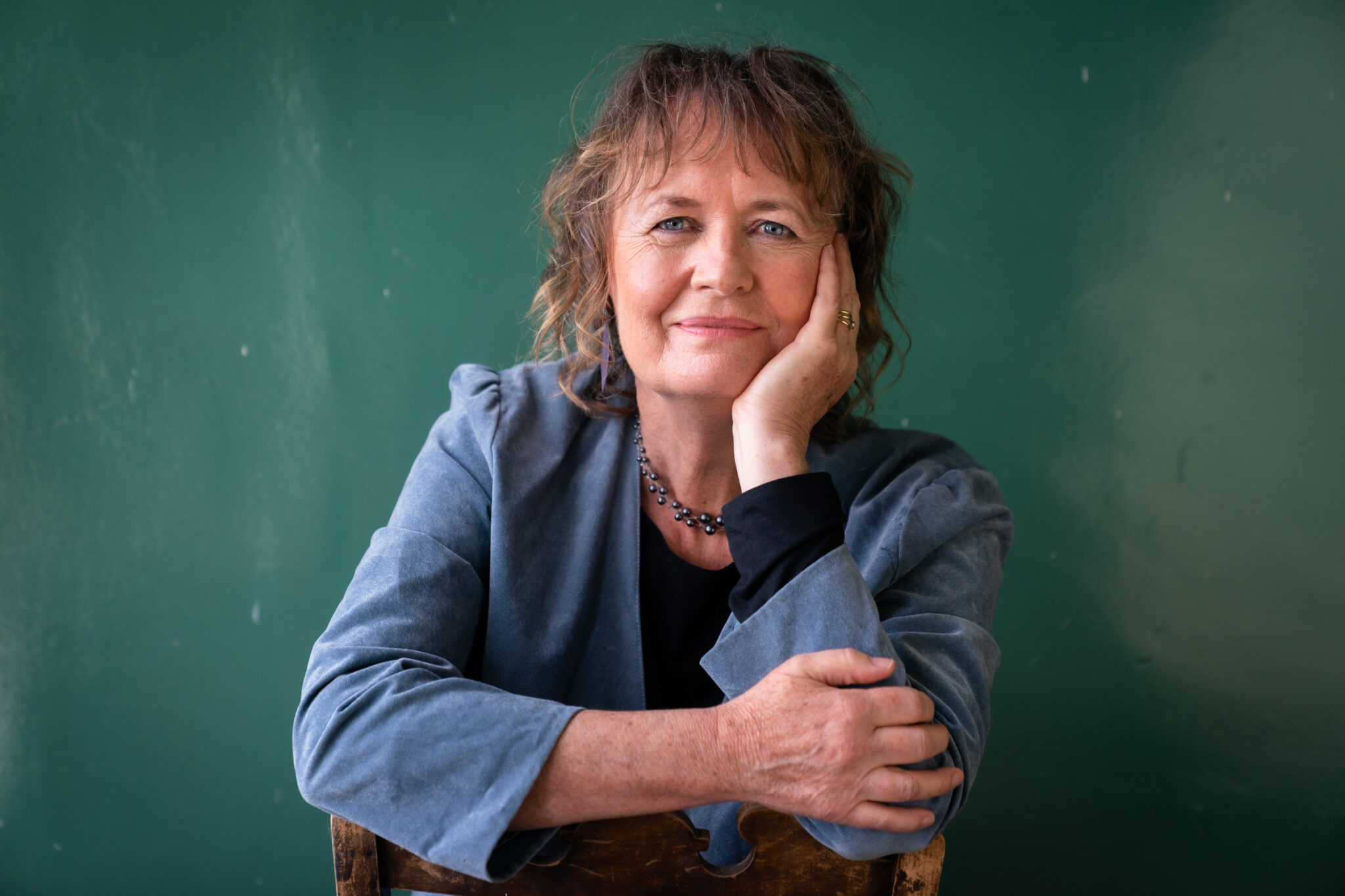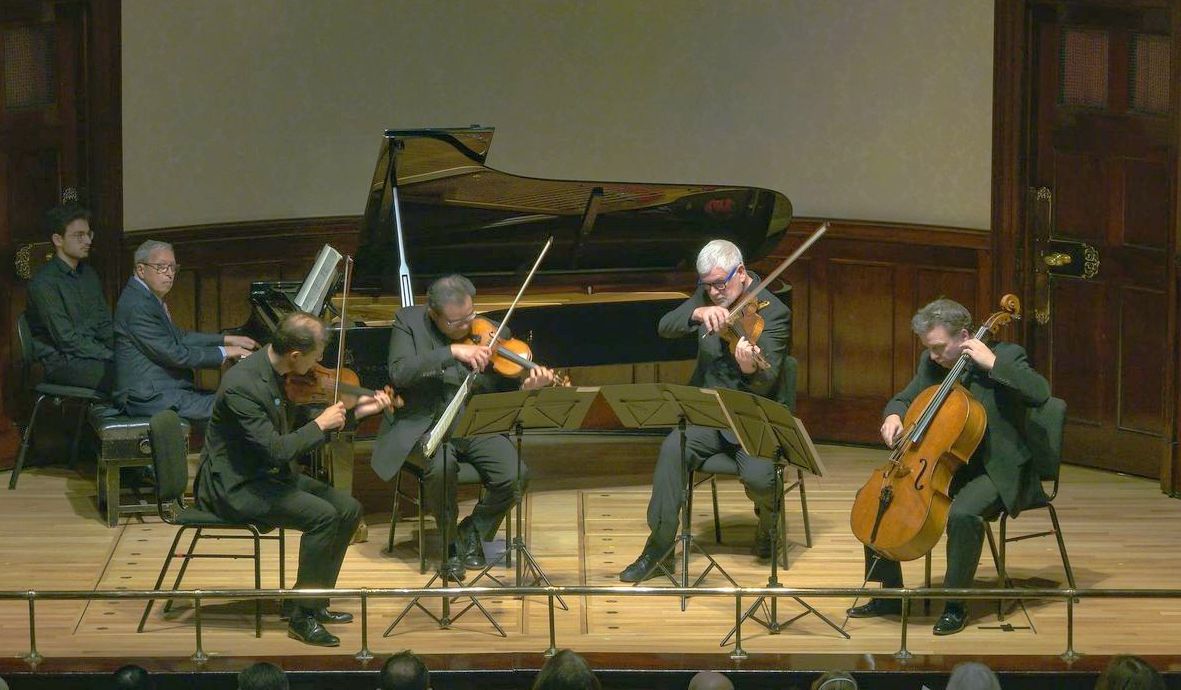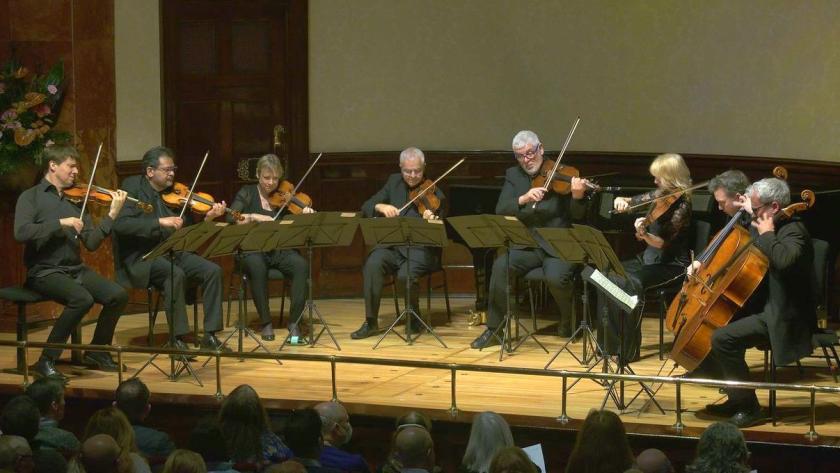All three works in the second of this week’s Neville Marriner centenary concerts from the ensemble he founded vindicated their intention to reign for ever and ever. Those very words as set by Handel in his “Hallelujah” Chorus were treated fugally by Mendelssohn in the coruscating finale of his Octet, and as part of her own homage in the Partita for String Octet, Sally Beamish approached them very differently. Her ethereal fugue deserves immortality, too.
Introducing her work at the begiinning of the concert, Beamish (pictured below by Ashley Coombes EPCSCOTLAND) told us how her mother played in Marriner's Academy of St Martin in the Fields, and having turned pages during a session (and later been principal viola in the Scottish Chamber Orchestra, golden years I remember well), the daughter was approached by the great man to be ASMF Composer in Residence. He died at the grand age of 92 before hearng the results, but she's right – he would have liked the way in the Partita she honours the individual players, as he did, and the various approaches she takes to homage three of their musical gods, too.  Perhaps there's a stuttering awe in even approaching Bach with a fragment from the D minor solo violin Sonata; the Prelude proceeds in stops and starts. But "he shall reign..." is transcendently handled, and the opportunities for each string player in the Chaconne were gratefully taken, above all by first cellist Richard Harwood – such a golden tone – and first viola-player Robert Smissen, who finally makes the subterranean reference in the main theme clear (Beamish spilled the beans in her introduction – it's the Wedding March from the music for A Midsummer Night's Dream).
Perhaps there's a stuttering awe in even approaching Bach with a fragment from the D minor solo violin Sonata; the Prelude proceeds in stops and starts. But "he shall reign..." is transcendently handled, and the opportunities for each string player in the Chaconne were gratefully taken, above all by first cellist Richard Harwood – such a golden tone – and first viola-player Robert Smissen, who finally makes the subterranean reference in the main theme clear (Beamish spilled the beans in her introduction – it's the Wedding March from the music for A Midsummer Night's Dream).
The real buzz about the evening was the relatively late announcement that Murray Perahia would be returning to play in London after too long a gap (it is hard to realise that Maurizio Pollini will not longer be making similar annual appearances, so the re-emergence of another keyboard hero, after too long an absence owing to a bone abnormalty in his hand, came as rare balm). An American tour with the ASMF was one of the earlier casualities, so it was especially meaningful that he re-emerged last night to join four of the players (Tomo Keller, Harvey de Souza, Smissen and Harwood) in Schumann's Piano Quintet.  The familiar Perahia articulation and ease are still very much there. But while this interpretation was a model of clarity, it wasn't the miracle of poetry that I've heard in other recent performances. There seemed to be a determination to make abstract the two-faced legend of the second movement: the funeralish march not mysterious, the lyrical respite never taking wing. At least the scherzo and finale were objectively perfect.
The familiar Perahia articulation and ease are still very much there. But while this interpretation was a model of clarity, it wasn't the miracle of poetry that I've heard in other recent performances. There seemed to be a determination to make abstract the two-faced legend of the second movement: the funeralish march not mysterious, the lyrical respite never taking wing. At least the scherzo and finale were objectively perfect.
Not tumultuously joyful, though, in the way that the Mendelssohn's Octet – surely the most remarkable work ever composed by a teenager, though there's competition – proved under the sophisticated but always dynamic guidance of ASMF director Joshua Bell. If the opening sallies of sheer joy from the first violinist don't fly, forget it; these did, and how. complemented by the gilded freighting of cellists Harwood and Will Schofield. The fairy-music of the scherzo was nuanced to the finest degree; the Presto began tumultuously and kept up that initial promise. You always come out feeling better from even a merely good performance of the Octet; this was a great one. Full marks, too, for a lavish and informative Marriner 100 booklet.















Add comment